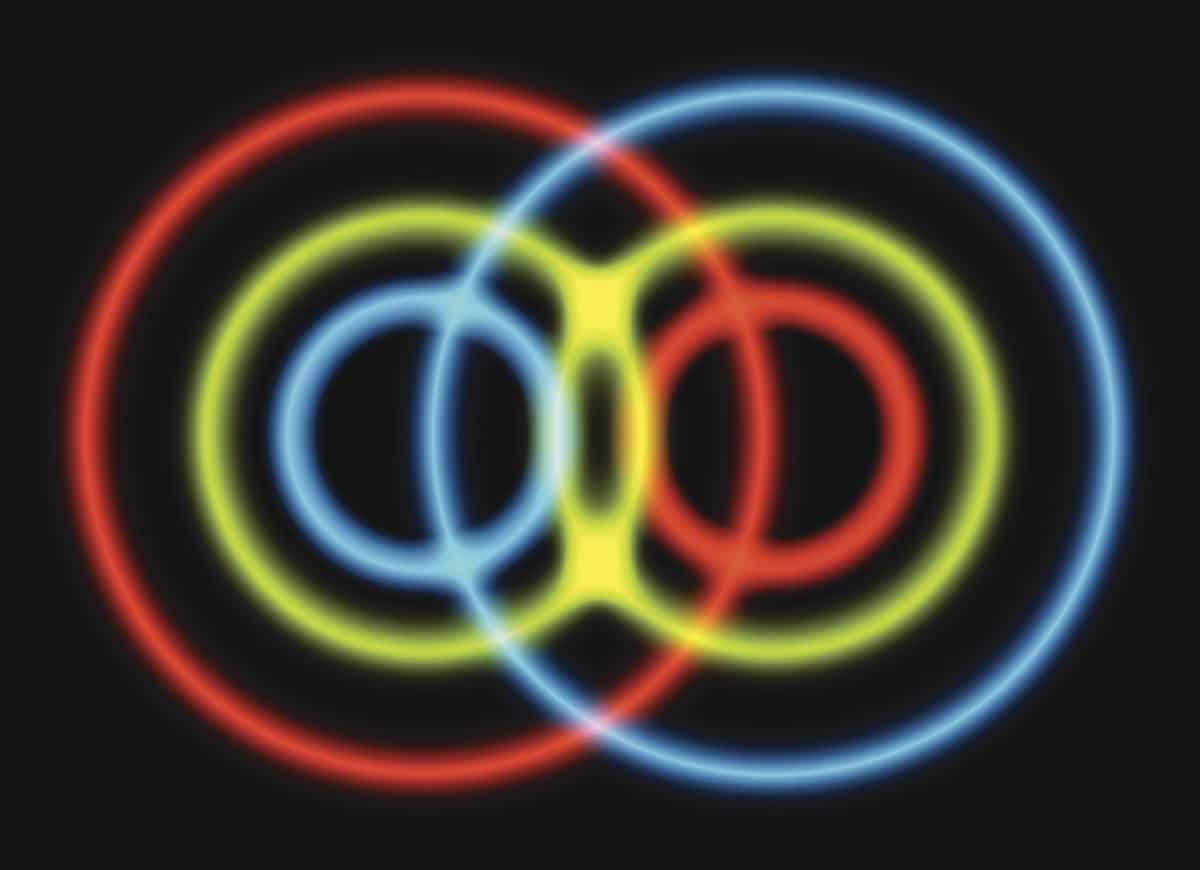
Introducing the π-ton, which could be the newest known quasiparticle
by Sam JarmanA new type of quasiparticle has been predicted by Anna Kauch and colleagues at Technical University Vienna in Austria. Using computer simulations, the team concluded that the “π-ton” (pronounced pie-ton) is created by the bonding between two electron-hole pairs in semiconductor-like materials. The researchers now hope that π-tons could soon be studied in real experiments and even put to work in photovoltaics.
Quasiparticles are particle-like excitations that emerge from the collective behaviour of electrons and other entities in solids. They include polaritons, which arise from the interaction between electrons and light and excitons that are created when an electron in a semiconductor’s valence band is excited by a photon to the conduction band. In the electron’s place, a positively charged “hole” is left behind in the valence band, which the electron remains strongly attracted to. The electron-hole pair behaves like a particle – an exciton.
Kauch’s team initially set out to study excitons by doing computer simulations of “strongly correlated” materials that have strong interactions between electrons. Unlike semiconductors, which initially possess filled valence bands and empty conduction bands, strongly correlated materials have half-filled conduction bands. This means that their behaviours are dominated by fluctuations in “charge density waves” – linear chains of fermions which form standing waves.
Reverse rotation
The researchers had hoped to study the characteristics of exciton formation in these materials, but to their surprise, their simulation seemed to yield a new type of quasiparticle entirely. Kauch and colleagues discovered that when excited by a photon, two electron-hole pairs became bound together by the material’s charge density wave fluctuations, which were reversed by 180°, or π rad, at each crystal lattice point. This behaviour led directly to the proposal of a new quasiparticle; which the team dubbed the π-ton.
To make sure this result is not simply a quirk of their simulation, the team recreated the same conditions across multiple models. The π-ton reappeared every time, removing doubt of its existence. Kauch’s team believe that this provides a strong reason to do experiments involving real strongly correlated materials – in which π-tons could be created through photon excitation, then confirmed by the photons they re-emit as they disappear.
Already, the physicists have suggested samarium titanate as a strong candidate material for these efforts, since previous experimental data appears to suggest that it can host unusual quasiparticles. If achieved, such experiments could bring about a more in-depth understanding of the quantum interactions that take place between light and solids. They could also provide materials physicists with new research opportunities; along with innovations in technological applications including photovoltaics and semiconductors.
The research is described in Physical Review Letters.